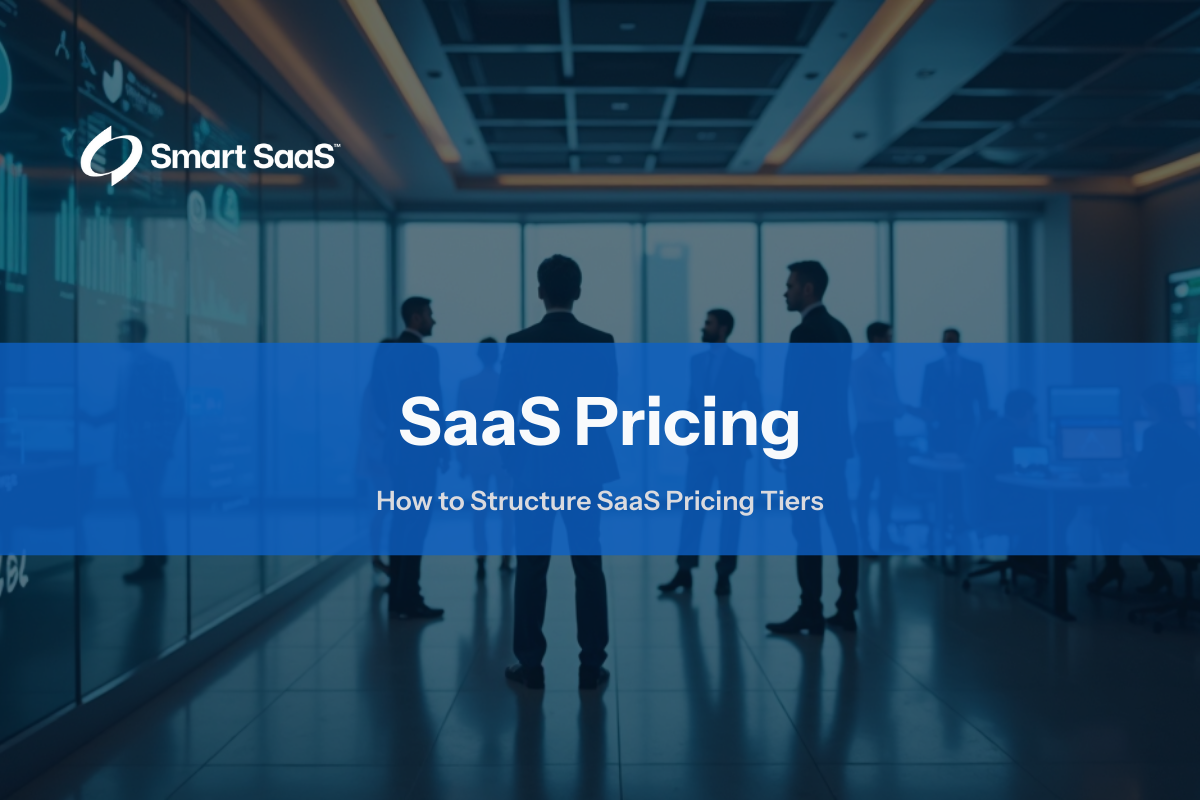

Monday, March 10, 2025
Kevin Anderson
Crafting SaaS pricing tiers involves more than slapping on catchy plan names and fixed monthly rates. The goal is to attract a range of customers—from startups to large enterprises—and guide them into the tier that best fits their immediate needs while inviting logical expansions down the line. Yet many SaaS companies stumble into rigid or confusing tiers, leaving smaller businesses overpaying for unnecessary features, or larger teams unable to scale without frustration. This article explores how to design tiered pricing so it’s clear, user‑friendly, and profitable for you—along with practical ways to avoid practices that can alienate users or erode trust.

SaaS pricing tiers are a strategic tool used by companies to segment their market by offering different levels of service. This approach ensures that customers only pay for the features they need while providing clear upgrade paths for those whose requirements grow over time. In a competitive environment where flexibility and transparency are key, establishing well-defined tiers can help reduce churn, increase conversions, and ultimately drive revenue. By balancing revenue generation with user satisfaction, pricing tiers can lead to a more sustainable business model that supports both small teams and large enterprises. Understanding how to structure these tiers is essential for aligning your offerings with customer expectations and operational demands. For further insights into market evolution, you might explore what is SaaS and learn about the SaaS business model.
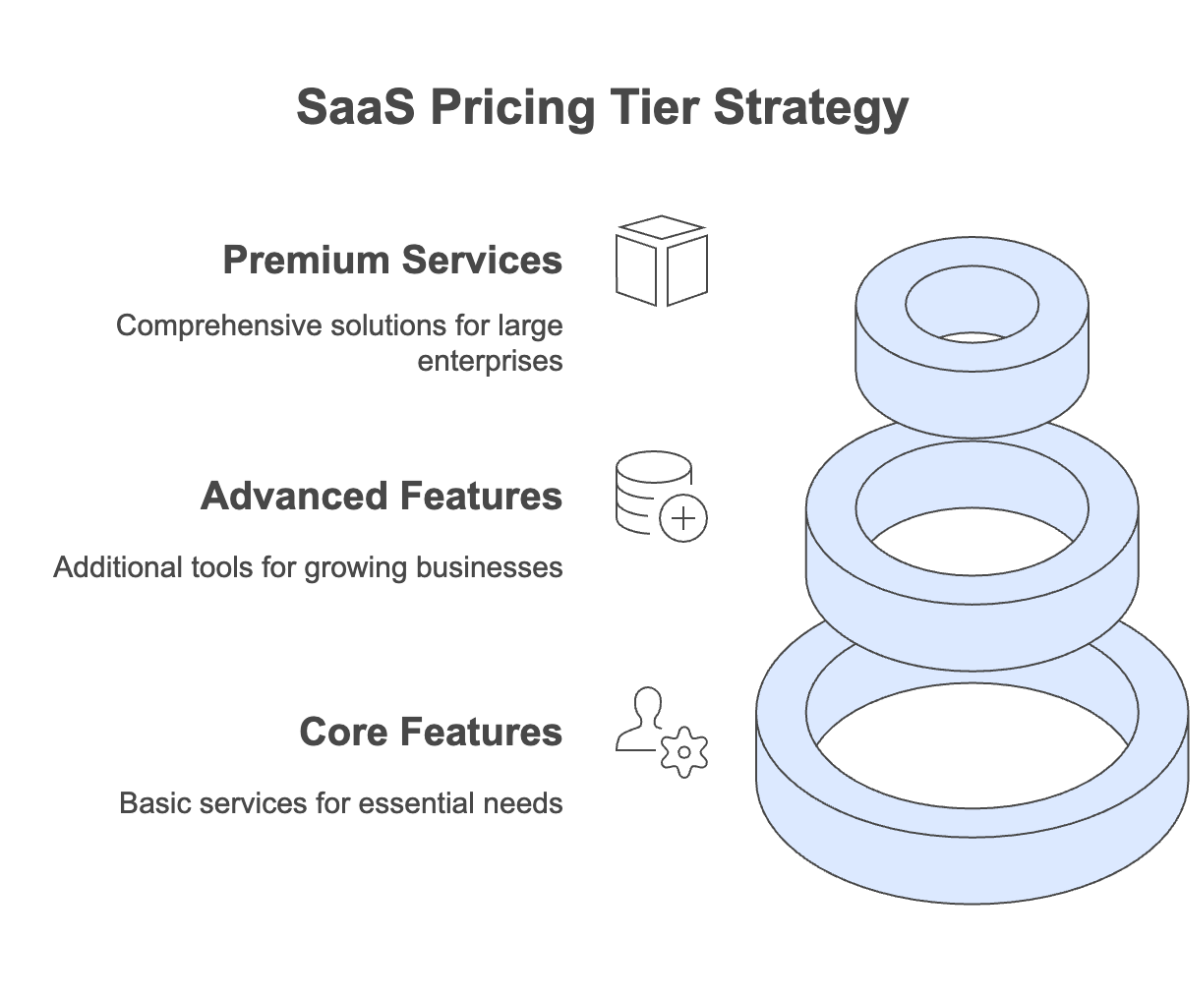

Many SaaS solutions begin with a single plan or a basic “one‑size‑fits‑all” subscription that quickly shows its limitations. Users who only require minimal capabilities complain about paying for unwanted features, while power users who need advanced options feel hamstrung by the lack of a higher‑tier plan.
Tiered pricing allows you to create multiple subscription levels, each carefully curated with features, usage limits, or support levels that align with different user segments. The simplest tier might handle basic needs with minimal resource usage, while higher tiers can include advanced analytics, increased seats, or specialized compliance features.
This structured approach not only addresses varied needs but also ensures that customers perceive a clear value increment as they upgrade. In today’s dynamic market, it is crucial to tailor your pricing structure to meet evolving user expectations and to stay competitive. Learn more about industry trends in digital transformation and explore strategies in AI readiness for deeper insights.


The B2B market alone features a wide variety of usage profiles. Small teams may need basic collaboration tools, while mid-level businesses require moderate analytics and larger enterprises demand extensive customizations. When your pricing tiers are designed to cater to these varied use cases, you open multiple “doors” for potential buyers by aligning each plan’s scope with real, day‑to‑day benefits. This segmentation not only helps reduce confusion but also fosters a better overall user experience.
A flexible tier structure allows companies to select a plan that fits their budget and operational needs, and then seamlessly upgrade as those needs expand. This level of customization can significantly improve customer satisfaction and retention. For a broader perspective on market segmentation, check out our discussion on vertical vs. horizontal SaaS models.
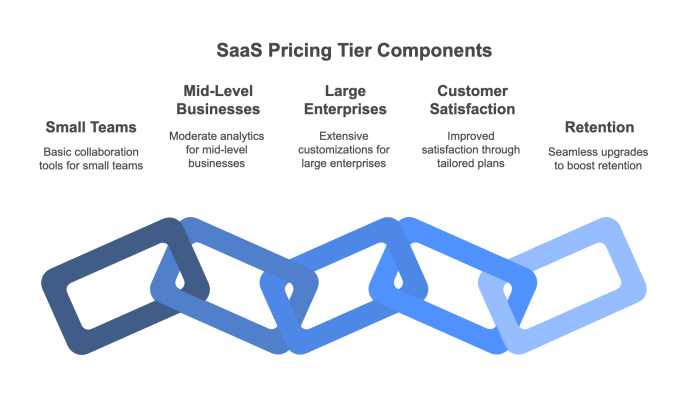

Upselling is a key component of SaaS growth strategies. The right approach encourages customers to move to higher tiers when they see tangible returns on investment—such as increased user seats, higher data volumes, or access to advanced functionalities.
However, it is vital to avoid gating essential features exclusively behind the most expensive tiers, as this can lead to customer dissatisfaction and churn. Instead, each tier should offer a balanced mix of features that provides immediate value, while also clearly delineating the additional benefits available in higher tiers. This fairness in pricing not only builds trust but also encourages organic growth within your user base.
When users feel that upgrading is a natural progression rather than a forced expense, they are more likely to remain loyal. For additional strategies, explore our article on building successful SaaS business models.
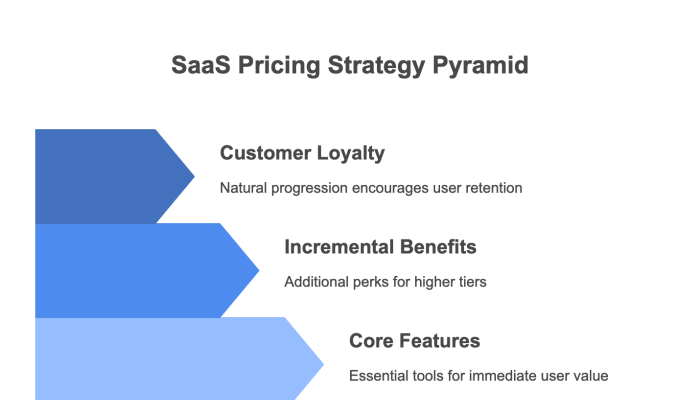

SaaS companies use multiple pricing tiers to effectively capture a diverse market. A single subscription model cannot address the varied needs and budgets of all potential customers. By segmenting features, usage levels, or capacity across several tiers, vendors can tailor their offerings to different customer segments, ensuring that small teams, mid‑sized businesses, and large enterprises each find a plan that suits their requirements.
This segmentation not only improves pricing optimization but also enhances user retention by providing an organic upgrade path as customer needs evolve. In this way, tiered pricing models foster long‑term customer relationships and drive revenue growth. For further reading on market strategies, see our post on SaaS platform features and applications.


When designing SaaS pricing tiers, several key factors must be taken into account to ensure the model is both fair and scalable.
Beyond simple metrics such as seat counts or usage caps, a thoughtful pricing structure requires a deep understanding of customer segmentation, feature bundling, growth-stage needs, and a transparent billing framework. These elements help align each pricing tier with the perceived value offered to different customer groups, ensuring that each level is both attractive and sustainable.
By carefully defining what features belong in each tier, you can optimize revenue while minimizing customer churn and dissatisfaction. To learn more about strategic pricing, refer to our guide on SaaS billing and subscription chaos.
Effective tiered pricing starts with a thorough understanding of your target market. Determine whether your software serves primarily mid‑market teams or large enterprises. For example, larger organizations may require advanced auditing or data-lake integrations, whereas smaller teams might only need essential collaboration tools.
This segmentation clarifies which features are essential for each customer group and allows you to assign them to the appropriate tier.
Balancing “nice-to-have” and “must-have” features is critical. If most features are bundled into the highest tier, lower‑tier plans become unattractive; conversely, if the basic plan is too robust, users may see no reason to upgrade. Proper feature bundling ties cost directly to the perceived value, ensuring each tier is distinctly attractive.
This method, often known as pricing optimization, can drive conversions by clearly demonstrating the additional benefits of higher tiers.
Your user base can range from cost-conscious startups to established enterprises. Progressive tiers that add seat capacity or usage thresholds allow you to retain customers as they grow. The upgrade path should be designed so that users do not feel penalized as their needs expand; instead, it should feel like a natural evolution of their service plan.
Clarity in pricing is crucial. Avoid hiding advanced modules or usage surcharges behind vague language. Instead, define seat or usage thresholds clearly on your pricing page. For example, a mid‑tier plan might specify a limit of 15 seats or a certain number of gigabytes, with transparent overage fees. This transparency builds trust and minimizes the likelihood of customer disputes over unexpected costs.
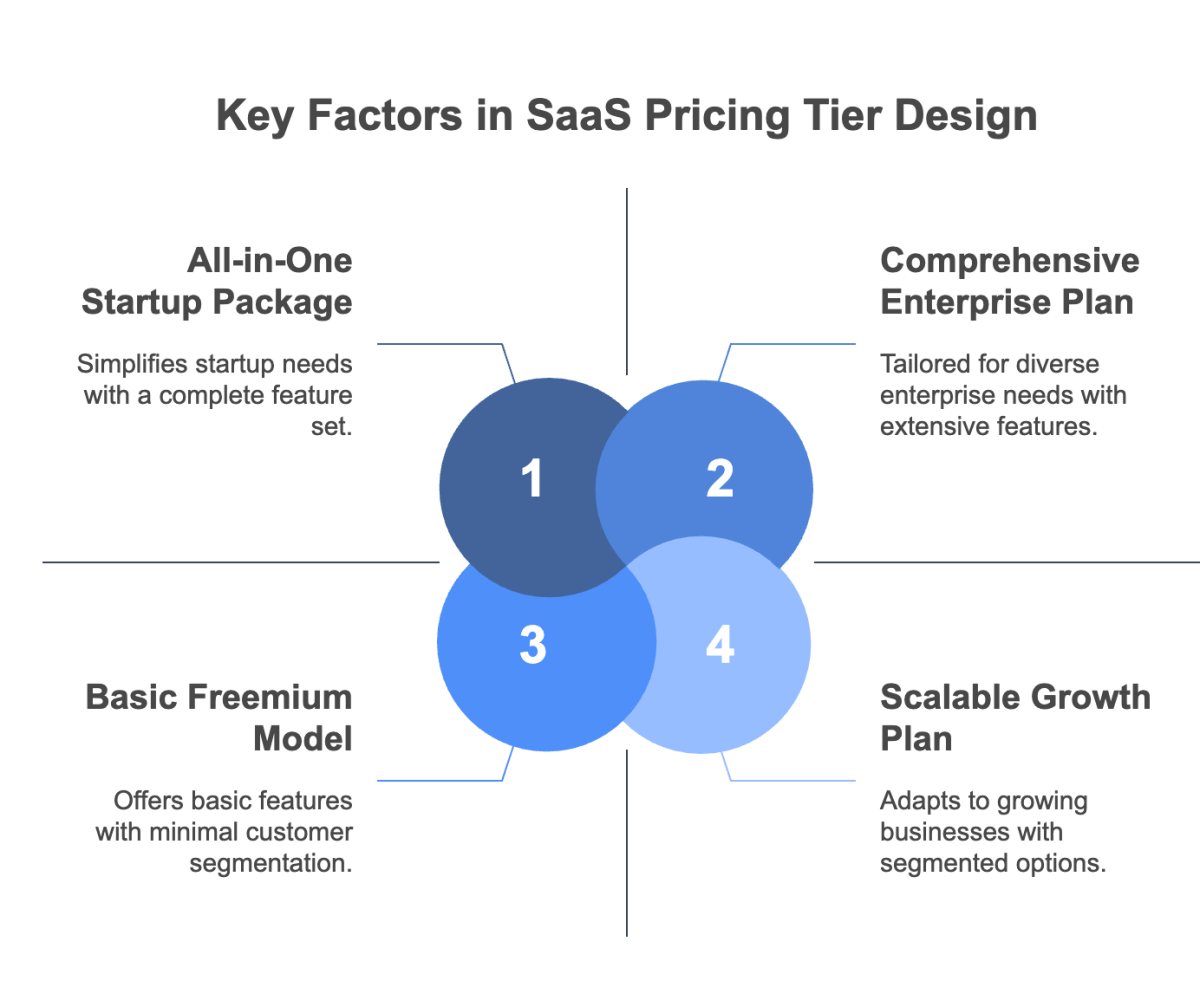

While the principles of tiered pricing are applicable to companies of all sizes, large-scale B2B deals require additional considerations. Enterprise clients often demand specialized add‑ons, dedicated support, and compliance checks that are not necessary for smaller customers.
A scalable pricing model must account for these complexities by offering clear distinctions between basic, mid‑tier, and enterprise packages. This means structuring your tiers so that a 20‑seat mid‑tier plan can coexist with an enterprise solution featuring advanced security modules, priority support, and usage‑based overage options.
Such an approach ensures that you can serve a broad spectrum of customers without sacrificing profitability or customer satisfaction. For more on scaling SaaS, read our insights on vertical SaaS for industry-specific innovation.

Creating a balanced SaaS pricing model is a systematic process that involves several key steps. Start by identifying your product’s core value proposition and the unique needs of your target customer segments. From there, define the feature set for each tier and determine appropriate usage or seat constraints.
The goal is to ensure that each pricing level offers a tangible increase in value without causing frustration or unexpected costs. Clear communication about overages and upgrade paths is critical to prevent misunderstandings. Finally, continuously test and refine your pricing tiers based on real-world feedback and usage data.
By following this structured approach, you can develop a pricing model that scales with your customer base and maximizes revenue potential while keeping churn to a minimum. For additional best practices, see our article on building successful SaaS business models.
Begin by defining the essential use cases of your product. Consider whether your software is primarily used for collaboration, data analytics, or another function. Mapping out the varying needs—basic versus advanced—will help determine how to segment your pricing tiers effectively.
Assign features to each tier intentionally. Reserve resource-intensive capabilities for higher tiers while ensuring that every plan offers a solid baseline of features. For example, standard analytics might be included in the mid‑tier, whereas advanced AI forecasting could be exclusive to premium plans.
Factor in usage limits such as data volume or monthly transactions. For a seat‑based model, clearly define pricing for seat expansions to ensure smaller teams are charged appropriately, while larger organizations benefit from bulk pricing.
Ensure that cost increases reflect a tangible improvement in value. A well‑structured pricing tier should offer significant benefits when moving from mid‑tier to top‑tier, without creating frustration over minor differences.
It is essential to define how overages are handled. For instance, if a mid‑tier plan allows up to 100,000 monthly actions, clearly state the surcharge that will apply if that limit is exceeded, or suggest an upgrade. Transparency here minimizes customer disputes and builds trust.
After launching your pricing tiers, monitor user distribution across the tiers. Use feedback and usage data to adjust feature sets or pricing gaps. Continuous refinement ensures your pricing model remains competitive and aligned with customer needs.


There are several common models for structuring SaaS pricing tiers. Each approach targets different customer segments and usage profiles, ensuring that every potential buyer can find a plan that meets their requirements. Below are some widely used models:
A free plan attracts cost‑conscious users who only need basic features, with opportunities to upgrade as their needs grow.
This mid‑range plan supports moderate usage and is ideal for small to mid‑sized teams that require more than a basic plan but do not yet need enterprise‑level features.
For large-scale organizations requiring advanced compliance, heavy data usage, or on‑premise options, custom pricing models are negotiated on a case‑by‑case basis.
Plans designed to evolve with your user base allow for seamless expansions or seat additions. These plans often include milestone‑based triggers or discounts based on volume growth.
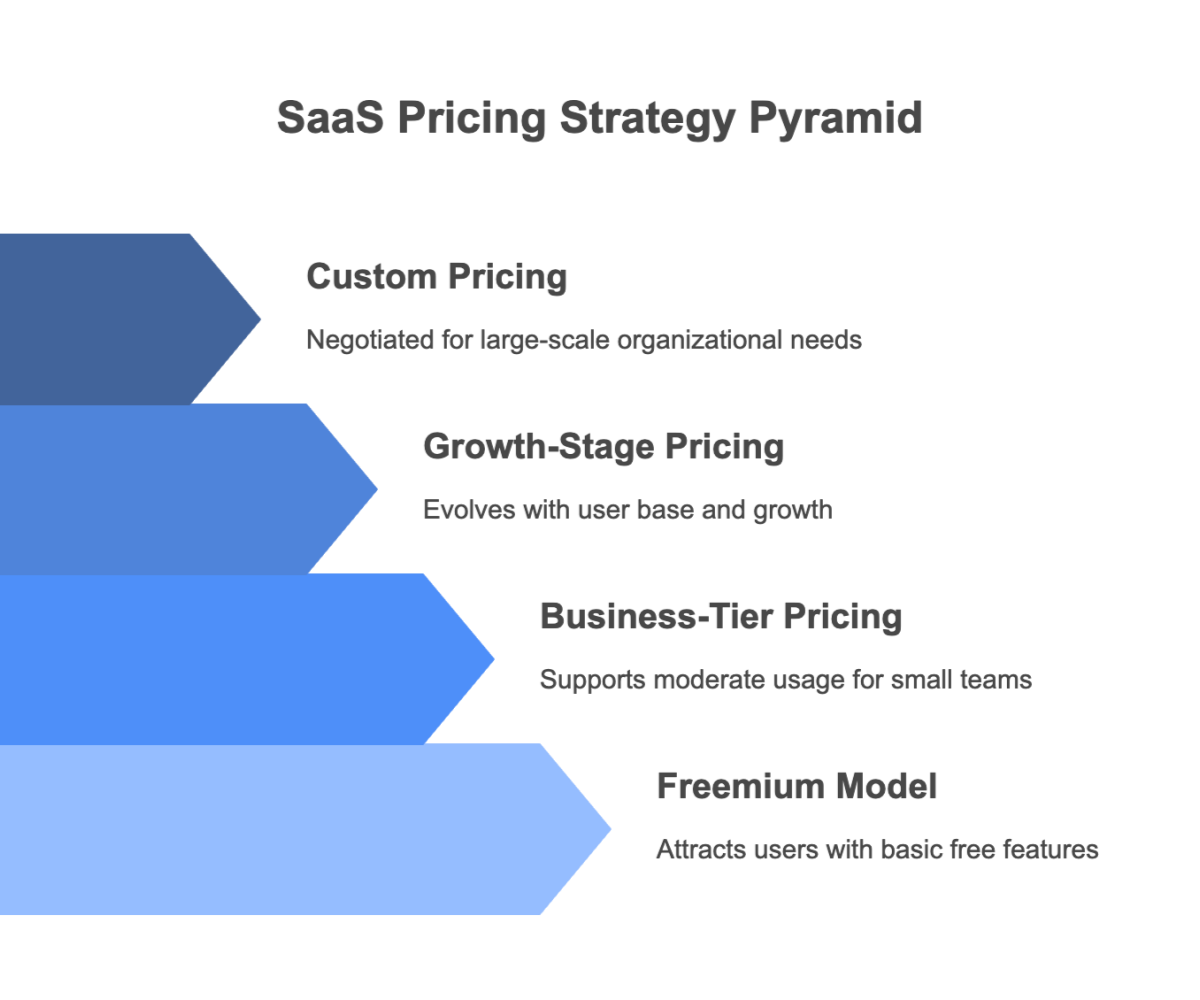

Below are some frequently asked questions that provide further clarity on the mechanics and benefits of tiered pricing in SaaS.
Vendors create multiple subscription levels, each with its own features, usage allowances, or support levels. Customers choose the plan that aligns with their needs and budget, and they can upgrade to a higher tier if additional resources or functionalities become necessary.
The key is to define clear differences in features and resource caps for each tier, tie the cost increment to a tangible increase in user value, and maintain transparent upgrade paths or overage policies. This ensures fairness and encourages logical progression as customers grow.
Consider user segmentation, usage patterns, compliance needs, and the importance of advanced features for certain groups. It is crucial to maintain essential security and core functionalities across all tiers, with higher tiers offering additional enhancements that justify the increased cost.
Multiple tiers enable providers to serve diverse customer segments—from small teams to large enterprises—each with distinct budgets and usage intensities. This structure not only supports upsell opportunities but also facilitates more effective pricing optimization.
A flexible and clearly explained tier system allows customers to upgrade or downgrade as their needs change, reducing churn. Conversely, forced expansions or hidden constraints can drive customers away.
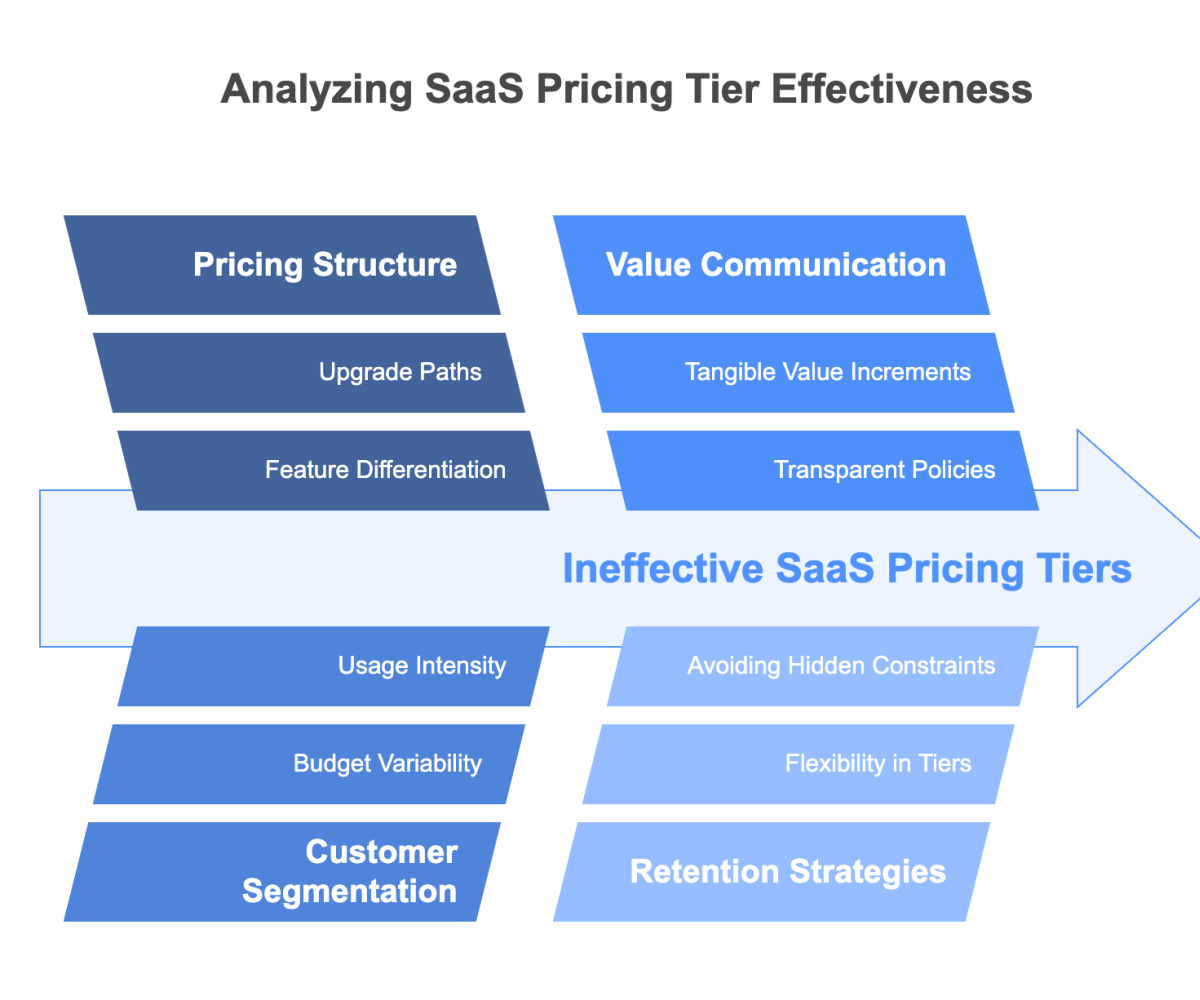

SaaS pricing tiers are a powerful tool for maximizing revenue and ensuring customer satisfaction when designed with clarity, fairness, and a deep understanding of diverse user segments.
By defining the distinct needs of small, mid‑sized, and enterprise clients and mapping each tier to appropriate features, seats, or usage thresholds, you can create a scalable pricing framework that encourages growth and minimizes churn.
A well‑built tier structure—free from hidden constraints or manipulative upgrade tactics—aligns closely with user interests and fosters trust.
When you communicate precisely what each plan includes, offer logical upgrade paths, and continuously gather user feedback, your pricing model becomes a strategic asset. It enables you to serve a wide range of customers, from budget‑conscious startups to compliance‑focused enterprises, without sacrificing profitability or user trust.
For additional insights on SaaS pricing strategies and to see how industry leaders manage their models, check out our related articles such as SaaS Security Key Challenges and Effective Solutions and SaaS Billing: Sorting Out the Subscription Chaos.
Ready to refine your SaaS pricing strategy? Download our free eBook, "SaaS Pricing 101" for actionable insights and proven tactics to structure pricing tiers that drive growth and enhance customer retention.
